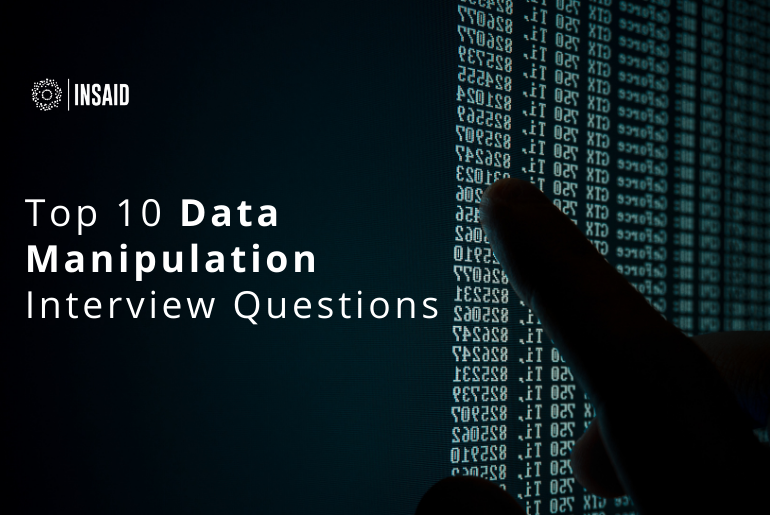Data manipulation is one of the most important responsibilities of a Data Scientist. It is a step between data cleaning and analysis. Data manipulation includes converting and structuring data to perform analysis, deduce actionable insights, and make business decisions.
To make the best out of data, companies look for Data Scientists with exceptional data manipulation skills. So, if you are interviewing for a Data Scientist role, you are highly likely to be asked questions on data manipulation tools and techniques. In this article, we have the top 10 data manipulation questions (with answers) for you. These questions will help you practice, prepare, and crack that Data Scientist interview.
Let’s get started.
What is Data Manipulation?
Once you have cleaned the data, it is important to organise it to analyse, understand, and interpret the required information. This is known as data manipulation. By manipulating data, you get rid of any useless information, organise it accordingly, get access to the required data sets faster and more efficiently, and at last, analyse and decode trends.
Data Manipulation Questions for Data Scientist Interview
1. Define Outliers. How are they identified?
Outlier refers to a value that appears to be diverging from a set pattern in a sample. To identify an outlier we can set limits on the sample values using an IQR. These limits on the sample value are a factor k of the IQR below 25th or above 75th percentile. The common value of factor k is value 1.5.
2. Name some methods to deal with missing value imputation?
Some popular methods include:
- Drop the missing values
- Imputation Using (Mean/Median) Values
- Imputation Using (Most Frequent) or (Zero/Constant) Values
- Imputation Using k-NN
3. Explain the standardization scaling method to normalize data
To normalize data using the Standardization scaling method we subtract by the mean and divide by the standard deviation of each column.
4. Write the syntax to merge two data frames in python?

5. How do you do the dummification of variables in python?
![]()
Example:
![]()


6. Name top 2 techniques to handle missing data
The top 2 techniques to handle missing data include:
- Dropping Incomplete Rows: This method is used when the missing data is random and smaller in quantity.
- Dropping Variables: This technique is used in cases when the missing data is in large quantity and of little importance to the analysis.
7. Give an example of an imbalanced dataset.
E-mail classification is a common example of imbalanced data. In this case, the emails are classified as ham or spam. And the number of latter emails is usually lower than the former. Therefore, the original distribution of classes leads to an imbalanced dataset.
8. Add a new column named ‘Prime’ to the customer’s DataFrame with all 1’s to indicate each customer’s prime member status.
To create a new column with a particular value for all entries by simply assigning this value to the whole column:

9. Define standardization
Standardization is the process to rescale features by removing the mean and scaling to unit standard deviation.
10. What is the syntax of standardization in Python?

We hope you found these questions useful. For more, check out our articles on SQL and Python interview questions. These articles will help you master Data Science topics and at the same time prepare interview focused answers.
 Pin
PinIf you want us to cover Data Scientist interview questions on any specific topic, let us know in the comments below.






